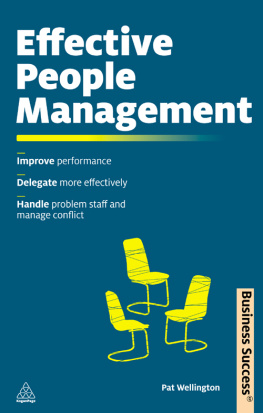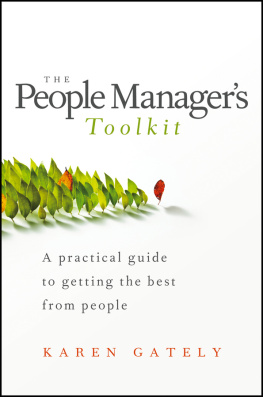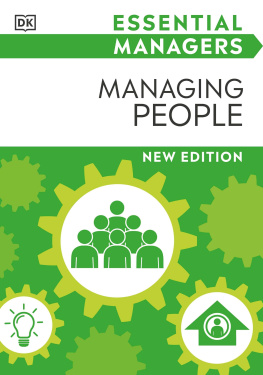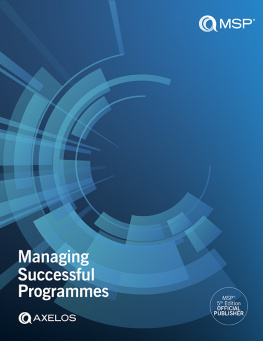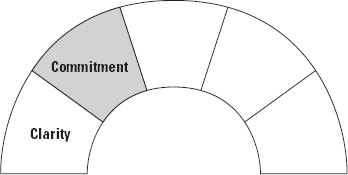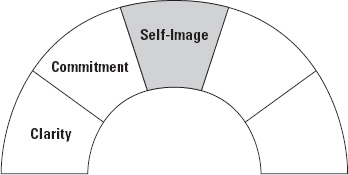Ian Mann
Published by Zebra Press
an imprint of Random House Struik (Pty) Ltd
Reg. No. 1966/003153/07
80 McKenzie Street, Cape Town, 8001
PO Box 1144, Cape Town, 8000 South Africa
www.zebrapress.co.za
First published 2002
Reprinted in 2004, 2005 (twice), 2006, 2008, 2010 and 2011
Publication Zebra Press 2002
Text Ian Mann 2002
All rights reserved. No part of this publication may be reproduced, stored in a retrieval system or transmitted, in any form or by any means, electronic, mechanical, photocopying, recording or otherwise, without the prior written permission of the copyright owners.
| Publisher: | Marlene Fryer |
| Managing editor: | Robert Plummer |
| Cover and text designer: | Natascha Adendorff-Olivier |
| Typesetter: | Natascha Adendorff-Olivier |
ISBN 978 1 86872 655 4 (print)
ISBN 978 1 77022 221 2 (ePub)
ISBN 978 1 77022 222 9 (PDF)
Contents
Introduction
If you read this book like any other book, you will not be any better at managing than you are now. You might find out a few things, but dont worry, youll soon forget them. You will still have trouble with staff, you will still want to do and say things that never get done or said. If you read this book like any other book, youll be no better because of it I promise you.
If, however, you want this book to improve your ability to manage other people effectively, and to get the right things done in the most constructive way, then you must work with it! This book cannot do it for you you have to do it for yourself. Dont sit back and relax! Take ownership of the material, understand it, make it your own, get involved with the ideas, and, most importantly, try them out. Practise them, note what goes right and what goes wrong, and learn from this.
If you do this, you will become a more professional manager, and you will enjoy your work more, feel more satisfied and get more done. In the beginning, as you try out the material, it may feel unnatural, but when you are comfortable with it, you will feel the power of managing with intent.
MEMORY AND UNDERSTANDING
Look at the numbers below. Concentrate on them for a minute, then close the book and see if you can remember them.
1 4 9 1 6 2 5 3 6 4 9 6 4 8 1
Could you remember the numbers? And would you be able to remember them in a weeks time? Probably not. It looks like a random list of numbers that is almost impossible to remember. People remember most easily when they understand.
Studies have shown that if a Grand Master looks at a chessboard, with pieces placed just anywhere, they have a hard time remembering the position of the pieces on the board. But if you show them a game in play, they have no difficulty remembering the board. People remember most easily what they understand.
I am going to show you how to memorise those numbers so that if you were asked to repeat them in a weeks time or in five years time you would be able to do so with ease.
The numbers are the squares of a sequence of numbers from 1 to 9: 1 1 = 1, 2 2 = 4, 3 3 = 9, 4 4 = 16, 5 5 = 25, and so on. Now if I asked you these numbers in five years time, you would be able to remember them easily, wouldnt you?
INTRODUCTION TO THE ARCH
Let me explain why I showed you those numbers. The connection between memory and understanding applies to being a better manager. Management is a real-time activity: there is no opportunity to reflect or check your notebook. You have to function from very deeply held ideas that are part of who you are. The management model Im going to show you is easy to remember and easy to use, and when you use it repeatedly it will become part of how you look at the world.
The model is an arch, made of five blocks. Each part of the arch is an aspect that can help or hinder your effectiveness as a manager. Lets look at these components one by one.
1. Clarity
The arch rests on two foundation pillars. Lets look at the one on the left first: clarity.
When a staff member is not performing well, the first thing you have to check for is clarity: Am I clear about what I want from this person? And are they clear about what I want? First you have to be clear about what you want, and then you have to make that clear to the staff member.
Extensive research shows that most managers arent clear about what they want from their staff. A consultant who was commissioned to implement a performance appraisal system in a company told me that she would ask the manager to identify what he wanted from the employee. Then she would ask the employee to write down what the manager wanted from him. Countless times she would go back to the manager just to check that she was talking to the right person, because the two lists had nothing in common! The manager had quite obviously never communicated his requirement in a way that the staff member could understand, or their lists would have been the same.
Without clarity, it is very difficult to get anything done. But there are ways of solving the problem. In this book I will show you how to deal with issues like this in the real world of work.
2. Commitment
Sometimes the staff member knows exactly what to do there is no problem with that. They just dont care. If that is the case, you have a commitment problem. This is the second component of the arch.
So often we see people who joined a company straight after school, and were given a relatively undemanding set of tasks, and ten years later they are still doing the same work. Because of their level they are never involved in any decisions, they are never challenged and they feel quite alienated from their employers. There is nothing about their work that motivates them; by now it is just a mindless routine. A job is a job and they dont think about it much at work and certainly not when they leave work. They are usually given no attention unless something has gone wrong.
If you know that the problem is a clarity problem you can solve it. If you know it is a commitment problem you can fix that too. The challenge is to get the staff member to want to do what you want them to do, and I will show you how to do that.
3. Self-Image
At the centre of the arch is self-image. It is possible that the staff member knows exactly what to do, and they are committed, but still they dont perform. The reason could be a self-image problem. People dont perform above or below their self-image.
If you ask someone to do something above their self-image, they wont do it. If you ask a young, introverted employee to give a talk in front of the entire company, with the managing director present, what do you think he is going to do? He will probably fall sick all of a sudden, or find some other excuse. His self-image does not allow him to stand up in front of so many people and give a talk.



